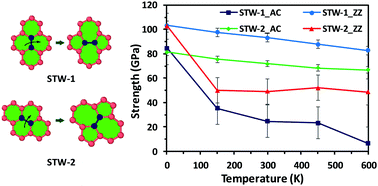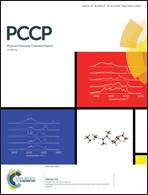Anomalous strength characteristics of Stone–Thrower–Wales defects in graphene sheets – a molecular dynamics study
Abstract
Graphene, viz., the one-atom-thick sheet of carbon, exhibits outstanding mechanical properties, but defects, which are inevitable at the time of synthesis, may strongly affect these properties. In this study, the effects of two types of Stone–Thrower–Wales (namely, STW-1 and STW-2) defects on the mechanical properties of graphene sheets at different temperatures and strain rates were investigated on the basis of molecular dynamics simulations. The authors also investigated the effect of the strain rate and defect concentration on the failure morphology of STW-1 and STW-2 defected graphene sheets. It was observed that, irrespective of the strain rate, the fracture strengths of STW-1 and STW-2 defected graphene sheets are identical in the zigzag and armchair directions, respectively, at low temperatures. It was also observed that the fracture strengths of graphene sheets with STW-1 defects in the armchair direction and STW-2 defects in the zigzag direction decrease drastically at higher temperatures and also at lower strain rates. On the other hand, it was noticed that the fracture strengths of graphene sheets with STW-1 defects in the zigzag direction and STW-2 defects in the armchair direction decrease gradually with an increase in the temperature and a decrease in the strain rate. It was also predicted that the failure morphology of graphene sheets with STW-1 defects in the zigzag direction and STW-2 defects in the armchair direction depends on the defect concentration and the strain rate.



 Please wait while we load your content...
Please wait while we load your content...